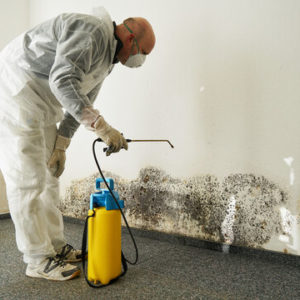 Mold cases are notoriously difficult to prosecute in New York. If you discovered mold in your apartment, and experienced symptoms commonly associated with mold exposure, you would think you have grounds for a clear-cut lawsuit against your landlord. However, it is not so easy. A recent decision in a mold case, by a New York Appellate Court, shows how difficult it is to win a mold case in New York.
Mold cases are notoriously difficult to prosecute in New York. If you discovered mold in your apartment, and experienced symptoms commonly associated with mold exposure, you would think you have grounds for a clear-cut lawsuit against your landlord. However, it is not so easy. A recent decision in a mold case, by a New York Appellate Court, shows how difficult it is to win a mold case in New York.
The Plaintiff in Buist v. Bromley Co. LLC was a tenant who sued her landlord, due to mold in her apartment which she leased from the defendant. The plaintiff claimed that the mold existed from 2006 through 2009 and that the mold caused various ailments including: tumors, lesions, skin ulcers, rashes, and pulmonary issues. Plaintiff’s treating doctor was an expert in infectious diseases who stated that the mold was a cause of Plaintiff’s injuries. The Defendant hired an expert who stated that it was not possible to assert with any scientific certainty that the mold in the apartment was the cause of the Plaintiff’s injuries. Prior to the trial, Defendants made a motion to stop the Plaintiff’s expert from testifying on the grounds that the opinions of the Plaintiff’s expert were speculative. The initial court ruled that Plaintiff’s expert could testify at trial, but the Appellate Division (a higher level appeals court) reversed.
The Appellate Court noted that in a mold lawsuit, an expert opinion on causation of injuries, to be included as evidence, must include “(1) …exposure to a toxin, (2) that the toxin is capable of causing the particular injuries plaintiff suffered (general causation) and (3) that the plaintiff was exposed to sufficient levels of the toxin to cause such injuries (specific causation).” The Court went on to state that to prove specific causation, it is not enough for a Plaintiff’s expert to testify that “exposure to a toxin is ‘excessive’ or ‘far more’ than others,” or to offer testimony “that merely links a toxin to a disease.” “At a minimum, . . . there must be evidence from which the factfinder can conclude that the plaintiff was exposed to levels of th[e] [mold]…known to cause the…harm…plaintiff claims to have suffered.”
In this case, as in many mold cases, the Plaintiff could not prove, among other things, the mold levels she was exposed to. Without an expert, it is impossible for the Plaintiff to prove their case, and here, Plaintiff will likely lose. This case is a cautionary tale as to how hard it is to for a Plaintiff to prove a mold case in New York. Even when there is no dispute that the mold existed, and that Plaintiff has suffered injuries which could be caused by mold, Plaintiff still has to prove the level of mold they were exposed to, and that it can be proven by scientifically accepted means, that such exposure was the cause of the injuries.